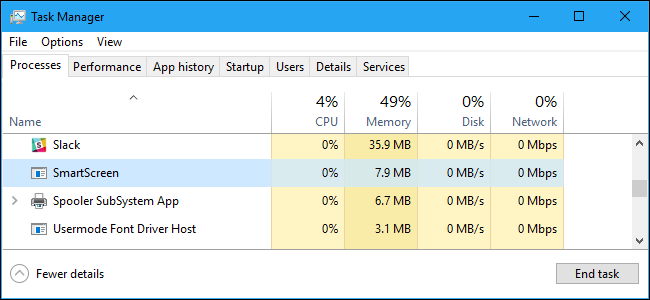
Windows 10 includes SmartScreen, a feature that helps protect your PC from downloaded malware and malicious websites. The “SmartScreen” process—with the filename “smartscreen.exe”—that you see in Task Manager is responsible for this feature.
This article is part of our ongoing series explaining various processes found in Task Manager, like Runtime Broker, svchost.exe, dwm.exe, ctfmon.exe, rundll32.exe, Adobe_Updater. exe, and many others. Don’t know what those services are? Better start reading!
What is SmartScreen?
SmartScreen was added for Windows 8, and it’s been improved in Windows 10. Whenever you download an application or file, the SmartScreen filter checks it against a Microsoft database. If the file has been seen before and is known to be safe—for example, if you download the installer for Chrome or iTunes—SmartScreen will allow it to run. If it’s been seen before and is known to be dangerous malware, SmartScreen blocks it. If it hasn’t been seen before and Windows isn’t sure whether it’s safe, Windows prevents the app from starting and warns you it may be dangerous, but lets you bypass this warning.
This service is also used in Microsoft Edge and Store apps to block malicious web content. However, the operating system SmartScreen process helps protect you no matter what application you use to download files. It helps even if you use Google Chrome or Mozilla Firefox as your browser, or download the files with another application.
SmartScreen is just another layer of security in addition to Windows Defender, which is represented by the Antimalware Service Executable process on your PC. Having a security system with multiple layers helps keep your PC safer, even if you use another antivirus program and a web browser with its own anti-malware features.
Why Is It Using CPU and Memory?
Most of the time, the SmartScreen…
The post What Is “SmartScreen” and Why Is It Running on My PC? appeared first on FeedBox.